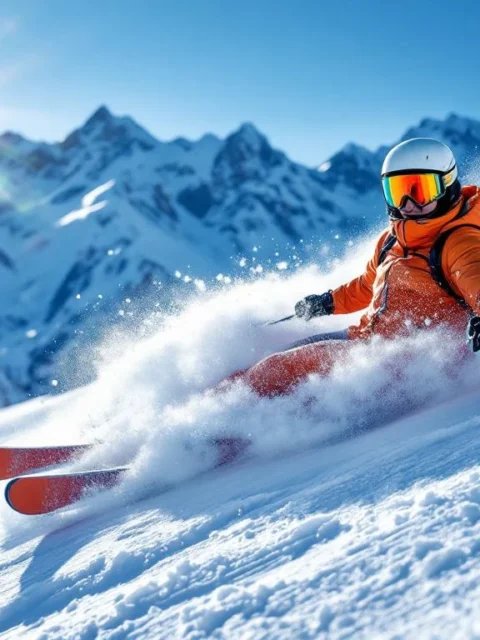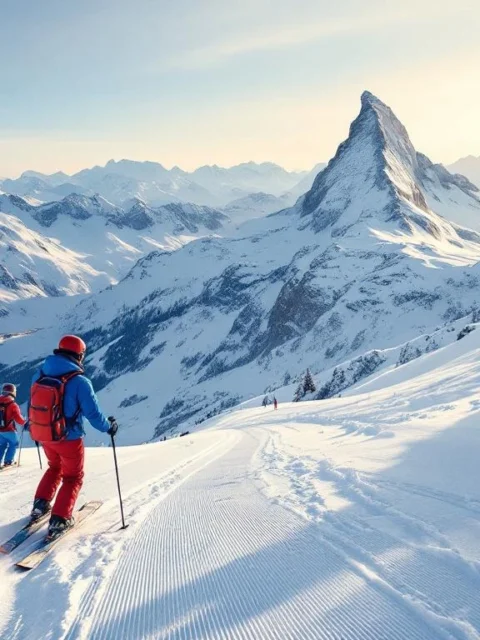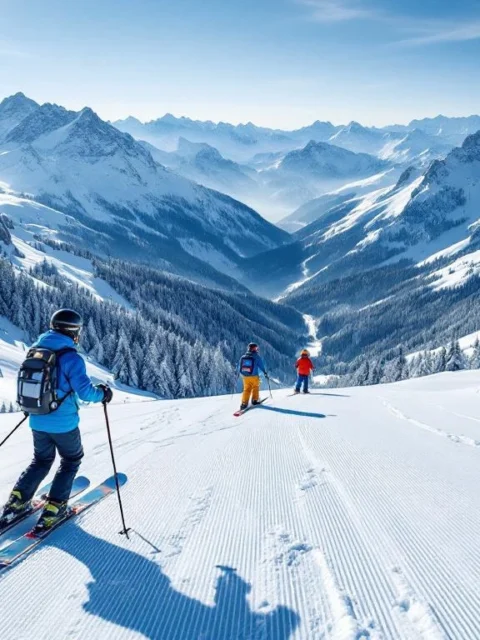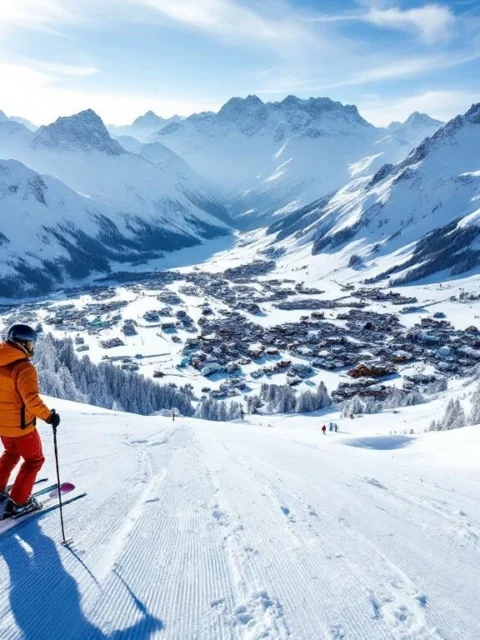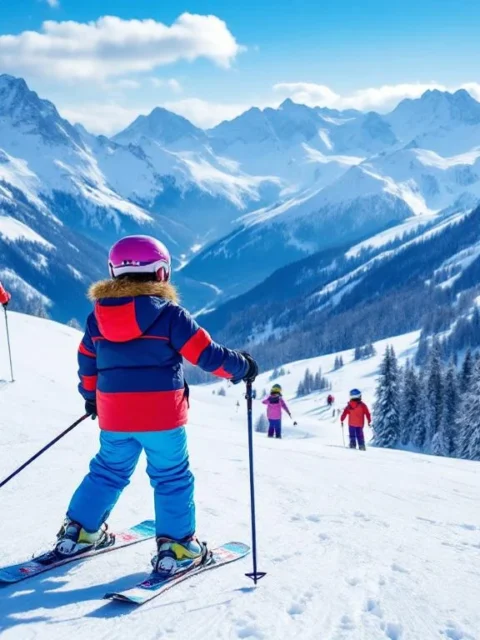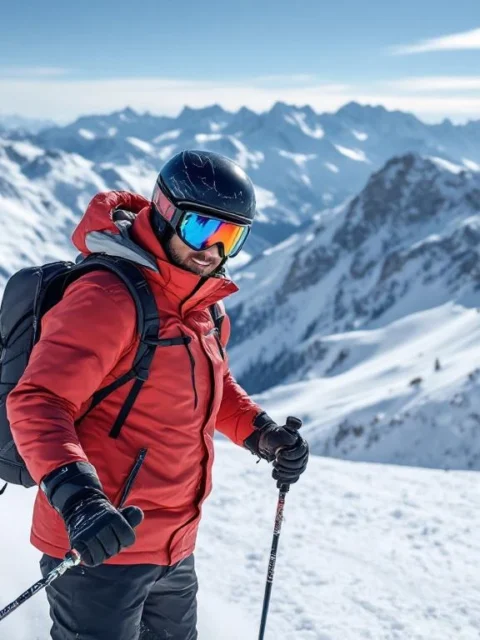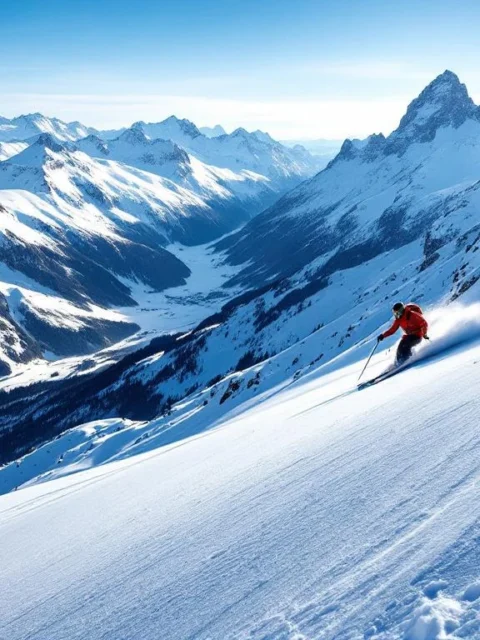How to Quickly Improve Your Ski Technique?

Want to improve your skiing skills faster? You can! Whether you regularly go on winter sports holidays or are just starting out, improving your ski technique doesn’t have to take years. With the right approach, you can make enormous progress within a single ski vacation. In this article, we share the most effective ways to quickly improve your ski technique without endless practice. We discuss common mistakes that hinder your progress, show how the right posture immediately improves your control, and explain why personal coaching can make a big difference. You’ll also get practical exercises you can do at home to hit the slopes stronger. Ready to take your skiing skills to the next level? Read on!
Common Mistakes Made by Beginning Skiers
When you’re just starting to ski, you’re likely making several classic mistakes that almost everyone makes. These mistakes are completely normal, but they can significantly slow your progress if you don’t address them.
One of the most common mistakes is incorrect body posture. Many beginners lean too far back on their skis. We do this instinctively because we’re afraid of falling, but it results in less control and faster leg fatigue. By leaning backward, too much pressure is placed on your heels, and you lose contact with the front of your skis – precisely the part you use to steer!
Another common mistake is incorrect weight distribution. Beginners often put too much weight on their inside ski during a turn, when it should be the opposite. By putting more pressure on your outside ski, you get much more grip and stability in your turns.
We also often see beginners rotating their upper body too much in turns. Your skis steer better when you keep your upper body relatively quiet and let the movement come primarily from your legs and hips. Excessive shoulder rotation makes you less stable and disturbs your balance.
Fear of speed is perhaps the biggest brake on your progression. When you’re afraid to pick up speed, you automatically adopt the ‘braking position’: skis wide apart, weight shifted backward, and constantly skiing in the snowplow (pizza) position. This limits your freedom of movement and prevents you from experiencing the flow of skiing. A bit of healthy speed actually helps you ski more smoothly!
Finally, many beginning skiers forget to look ahead. They stare at their skis or the snow directly in front of them, giving themselves no time to react to changes in the terrain. By looking further ahead, you give yourself more time to make decisions and improve your spatial awareness on the slope.
The Correct Posture on the Slopes
The foundation of good skiing begins with the right posture. With a good position on your skis, you immediately improve your balance, control, and endurance. Let’s look at the key elements of an effective skiing posture.
Your knees are crucial in skiing. Keep them slightly bent – not too much, but certainly not straight. This flexible position works as a natural shock absorber and allows you to quickly respond to irregularities in the snow. Think of your knees as springs that can constantly adapt to the terrain.
Your upper body should be upright and slightly forward-facing. A common mistake is leaning backward, but that greatly reduces your control. Try to imagine that your chest is always slightly ahead of your feet. This ensures that your weight is properly distributed across your entire ski and gives you more control over the front of your skis – the part you use to steer.
Your arms play a supporting role in your balance. Keep them relaxed and extended forward, approximately at navel height. Your poles should rest lightly in your hands, ready to plant when you initiate a turn. Avoid lifting your arms high or letting your hands hang by your hips – both disrupt your balance.
The position of your hips is also important. They should remain above your feet, not too far back or forward. Your hips are like the pivot point between your upper and lower body. From your hips, you can initiate the movement to make turns, while your upper body remains relatively stable.
Finally, your gaze is an underestimated element of good skiing posture. Always look 10 to 15 meters ahead, in the direction you want to go. Your body automatically follows where your eyes are looking. By looking far ahead, you better plan your route and respond in time to changes in the terrain.
This posture might feel unnatural at first, but quickly becomes comfortable if you keep practicing it. The great thing is that a small improvement in your posture immediately has major effects on your skiing ability and enjoyment on the slopes.
Why Personal Ski Lessons Make the Difference
If you really want to make quick progress in skiing, there’s really nothing that can replace good personal ski instruction. While self-study and tips from friends are certainly valuable, professional instruction offers benefits you can’t get any other way.
The biggest advantage of personal ski lessons is direct feedback. A ski instructor can see what you’re doing in real time and correct you immediately. Many skiers think they’re executing a certain movement correctly, while in reality they’re using a technique that impedes their progress. An instructor sees this right away and can make adjustments before bad habits become ingrained.
A good ski instructor also completely tailors the lessons to your level. They analyze what you specifically struggle with and design exercises that target exactly those areas. In a group lesson, you get more general instructions, but in a private lesson, you work on your personal challenges.
Moreover, an instructor helps you not only with technique but also with overcoming mental blocks. Many skiers are limited by fear – fear of falling, fear of steep slopes, or fear of speed. An experienced instructor knows exactly how to gradually take you outside your comfort zone, in a way that feels safe and builds your confidence.
Another advantage is that an instructor helps you move through the different learning phases more quickly. Without guidance, you might stay stuck in certain techniques for weeks or even seasons, whereas with the right instructions, you might be ready to learn new skills after just a few hours.
Even if you’ve been skiing for years, a refresher course or an advanced lesson can help you correct persistent mistakes or refine your technique. Many experienced skiers are surprised by how much better they can become with just a few hours of professional instruction.
Daily Exercises for Rapid Progression
You don’t need to be on the slopes to improve your ski technique. With targeted dry exercises at home, you can prepare your muscles, improve your balance, and ingrain movement patterns that you can directly apply once you’re on skis.
One of the most effective exercises for skiers is the squat. Perform this by placing your feet shoulder-width apart, keeping your back straight, and slowly bending your knees as if you’re sitting down on a chair. Keep your weight on your heels and make sure your knees don’t extend past your toes. Squats strengthen exactly those leg muscles that you use most during skiing.
For better balance, try standing on one leg while doing daily activities, such as brushing your teeth or washing dishes. Try to maintain this for at least 30 seconds per leg and then switch. If this becomes easy, close your eyes to increase the challenge. This exercise improves your proprioception – your body’s ability to sense its position in space – which is essential for good skiing.
The “alpine skier” position is also excellent for home practice. Stand with your back against a wall and bend your knees until your thighs are parallel to the floor (as if sitting on an invisible chair). Hold this position for 30-60 seconds. This isometric exercise builds endurance in exactly the muscles you use when in the proper skiing position.
For coordination and agility, you can do lateral jumps – jumping sideways from one leg to the other. Start slowly and focus on a soft landing and good balance. This helps your body get used to transferring weight from one ski to the other while making turns.
Don’t forget your core – a strong core is fundamental for good balance while skiing. Plank exercises are ideal for this. Start with 30 seconds and gradually build up as you get stronger.
Do these exercises at least three times a week in the months leading up to your ski vacation. You’ll be amazed at the difference it makes when you’re back on the slopes. Your muscles are stronger, your balance is better, and your body already knows the movement patterns, allowing your ski technique to improve much faster.
In addition to physical exercises, you can also practice mentally. Visualize yourself making perfect turns or gliding smoothly down the slope. Studies show that this mental training can be almost as effective as actual practice!
Once you’re on the slopes, start each day with a few simple exercises to warm up. Make some short turns on a quiet blue run, focus on your posture, and feel how your weight shifts during each turn. This conscious warm-up ensures that your muscles and your brain are ready for a day full of progress.
By combining these targeted exercises at home with conscious training on the slopes, you can significantly accelerate your ski technique. And who knows, by the end of your next ski vacation, you might be confidently tackling slopes you previously didn’t dare to try!
If you really want to make quick progress, consider booking a professional ski instructor who can guide you personally. At Ski-Pro, we’re happy to help you find the perfect ski lesson that matches your level and learning goals. Whether you’re a complete beginner or want to refine your technique, the right instruction makes a world of difference in how quickly you improve your ski technique.
Frequently Asked Questions
How long does it take to progress from beginner to advanced level?
Progression varies by person, but with the right approach, you can go from complete beginner to comfortable advanced skier within 2-3 intensive ski vacations. Consistent training is crucial here - practicing a few hours daily with focused attention to technique yields much better results than occasional long days. A combination of personal lessons, targeted exercises, and regular feedback significantly accelerates this process.
What can I do if I remain afraid on steep slopes, despite having good technique?
Fear of steep slopes is very normal and can be overcome step by step. Start by skiing short sections of steep runs, pausing in between to congratulate yourself on each successful descent. Focus on your breathing and technique, not on the steepness or speed. It can also be tremendously helpful to take one private lesson specifically focused on skiing steep slopes - an instructor can show you how to distribute your weight and which turning technique is most effective on steeper terrain.
What specific exercises can I do to improve my turning technique?
For better turns, 'short swings' are an excellent exercise - make as many short, rhythmic turns as possible on a quiet blue run while consciously transferring your weight to your outside ski. Another effective exercise is 'skiing on one leg' - during a long, gentle turn, slightly lift your inside ski to feel how you steer with your outside ski. Practicing 'carving' also helps enormously: tilt your skis onto their edges without skidding and feel how the skis themselves make the turn. Do these exercises for 15-20 minutes daily for the best results.
How can I improve my ski technique if I only go skiing once a year?
Even with just one ski vacation per year, you can make significant progress by training smartly. Start your vacation with one or two private lessons to quickly shake off rust from the previous year, then focus each day on one specific aspect of your technique. Prepare physically with the exercises from the article, at least 8 weeks before your departure. Also consider following dry training outside the season or visiting indoor ski facilities for a refresher course midway through the year.
What equipment makes the biggest difference for improving my technique?
Well-fitting ski boots are by far the most important piece of equipment for technique improvement - they provide direct control over your skis and good power transfer. Invest in quality boots rather than high-end skis. For beginners and intermediate skiers, versatile all-mountain skis are ideal, not too stiff and with a medium-width waist (80-90mm). Always have your equipment professionally adjusted to your level, height, and weight, as incorrectly set bindings can hinder your technique.
How do I know when I'm ready to move from blue to red runs?
You're ready for red runs when you can comfortably make parallel turns on blue runs, even when they get a bit steeper or snow conditions are less than ideal. You should be able to control your speed without constantly braking and can vary between short and long turns. A good test is whether you can descend a blue run while consciously shifting your weight from ski to ski and slightly lifting your inside ski during the turn - this demonstrates that you have mastered the basic skills needed for steeper terrain.
What are the most common plateaus in ski development and how do you break through them?
The most common plateau is the transition from snowplow turns to parallel turns, which you can break through by specifically practicing gradually lifting your inside ski during turns. Another frequent plateau occurs with intermediates who struggle with varying snow conditions - take a lesson specifically focused on technique for different snow types. For advanced skiers, the 'carving plateau' is common - break through this by consciously training on tilting your skis without skidding and by shifting your focus from power to precision and timing.


